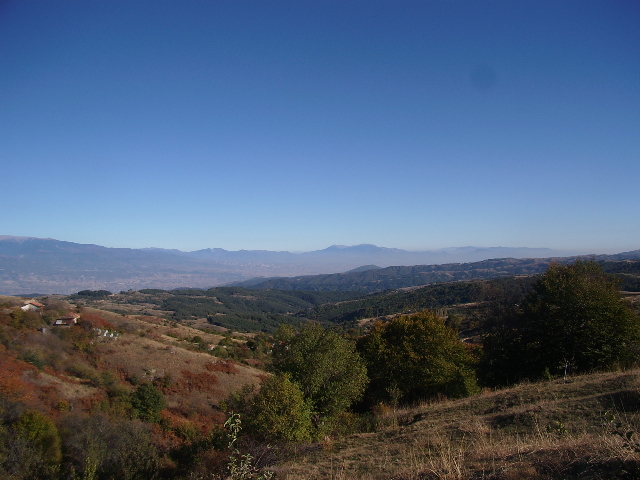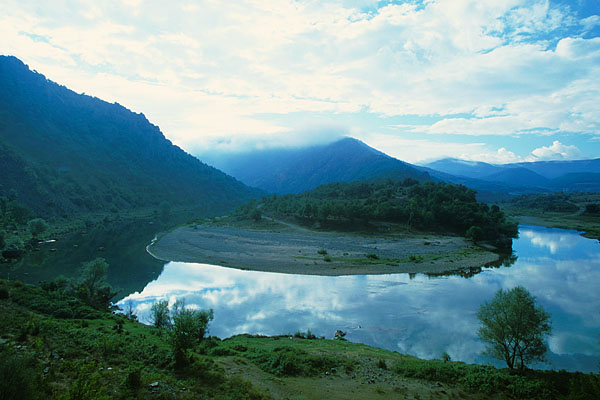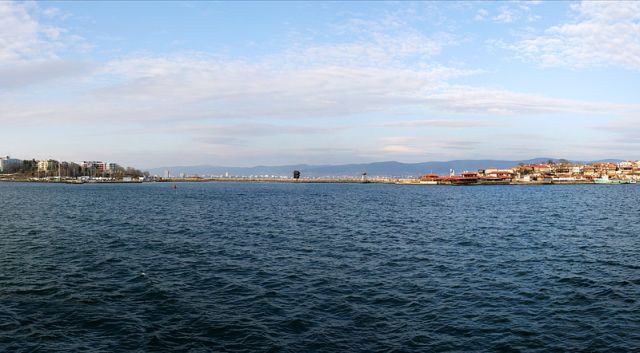Bulgarian Property Market
- on 04.24.08
- Bulgaria property news and articles
- 7 Comments
At the present time there are only three golf courses in the whole of Bulgaria: one at Elin Pelin, near the capital, Sofia, and two owned by Air Sofia. These are located at Ihtiman, opened in 2000, 40km from Sofia, and at Sliven, opened in 2004, 90km from the Black Sea.
Because of the increasingly rapid rise in foreign interest in Bulgaria recently, several more golf courses are proposed. One of these will be located at Razgrad, in the north-east, about 90km from the Black Sea. More are scheduled to open in the next few years: two at Kavarna and one at Primorsko, near Sozopol.

Mountain and ski areas will be represented by a golf course in the ski town of Bansko this year, and a very large golf complex between Kostenets and Borovets, the country’s foremost ski resort. This is scheduled for 2007, the year of Bulgaria’s entry into the European Union, and will be located at Dolna Banya, already near Bulgaria’s first golf course at Ihtiman.
A Bulgarian Property Ltd has purchased almost 6 acres of prime development land adjacent to the proposed golf course at Dolna Banya. The plans are to construct about 220 apartments around a comprehensive sports complex, with access to the golf course by a short footpath. The amenities on site are to include tennis, volleyball, squash, badminton, lawn bowls, boules (boccia), shooting, archery, croquet, mountain biking, and fishing nearby. Indoor facilities will include a 140-seat main restaurant and cabaret stage, a huge main bar (perhaps the largest in Bulgaria), a sports bar with projection TV, snooker, pool, table football, table tennis, a Chinese restaurant, Indian restaurant, fast food cafeteria, pizzeria, gymnasium, sauna, massage parlour, clinic, chemist, sports shop and minimarket.
Steve Avery, a Director of Bulgaria Properties Ltd, said, ‚ÄúIt may sound like a clich√©, but we really were in the right place at the right time! After two years in this business, I just couldn‚Äôt believe my luck to find such a gem. Anyone involved in this project should make a serious return on their investment.‚ÄĚ
GENERAL OBSERVATIONS ABOUT THE BULGARIAN PROPERTY MARKET
On Borovets and Bansko generally, Steve had this to say: “Apart from having ski lifts and ski runs, these two towns are quite different from each other, and appeal to different groups of people. Bansko is an old, traditional residential town with lots of character and no fewer than 180 quaint taverns full of local people singing and dancing to a typical Bulgarian folk band. Borovets, by contrast, is purely a resort, with hotels, modern west European-style bars and night-clubs, cafés and restaurants. Residential property and holiday homes are therefore readily available in Bansko, but not in Borovets, where the closest you can get is usually in one of the surrounding villages.
‚ÄėAs for property values, Bansko went mad for a period of three months at the end of 2003, with land prices doubling, and then calmed down. Many poor goat herders suddenly found that they were rich. Nothing wrong with that, I say. Since then values have been pretty steady there until now, when they‚Äôre starting to creep up again. The reason for this is that the sudden surge in foreign tourists to Bansko has left the supply of holiday accommodation woefully short of the demand. And this trend shows no sign of abating. To try to cope with it, there have sprung up many hotels and apartment projects, but it seems unlikely that even these will be able to satisfy the demand for accommodation for several years yet. As a result, the prices for such apartments range from 1,000 Euros per sq.m. for a ground-floor unit facing away from the mountains, to 1,350 Euros per sq.m. for a top-floor example with a mountain view. Yet, people buy them. I guess, because a 1 bedroom 60sq.m. apartment for ¬£41,000 is still a far better deal than you‚Äôd get in Spain. I‚Äôve heard developers claim that 90% of their apartments are sold within 3 weeks! I only hope that we have such luck when ours are released in June!
‚ÄėIn this respect Borovets, again, is different. Although it‚Äôs Bulgaria‚Äôs first and best-known ski resort, it stagnated for years‚Ķ until now. The ‚ÄėSuper Borovets‚Äô project, funded by EU, governmental, foreign and local business sources, is scheduled to run from 2005 to 2009, and will revitalise the whole region around the town to a radius of 10-12km. This has already started to affect property values in the surrounding areas. To give an example, in March 2004 we bought, unseen, a half-acre plot in a village 15km from Borovets. When I visited it, I discovered that it wasn‚Äôt suitable for building apartments; so, I put it on the market in August. By November it was sold at an 80% profit ‚Äď after all costs were deducted!
‚ÄėI am personally of the opinion that the ‚ÄėBansko effect‚Äô could strike around Borovets at any moment. That‚Äôs the reason why Bulgaria Properties Ltd is developing four projects here, and only two in Bansko. We can sell these apartments about 15% cheaper ‚Äď at the moment, anyway. Borovets must surely offer a better return on investment, regardless of the type of property bought: land, a shack, whatever. You won‚Äôt find new apartments easily, though. As far as we know, Bulgaria Properties Ltd is the only developer building them. I don‚Äôt, however, expect this monopoly to last for long.
‚ÄėBulgaria‚Äôs third ski region is at Pamporovo, which, like Borovets, is purely a resort. Funding is starting to come in, but full development, if it happens at all, is likely to follow several years behind Borovets. Its distance from Sofia (a day‚Äôs drive) makes it less attractive to visitors from north and west Europe. It is, however, popular with Greeks, because of its proximity to the frontier. One of Bulgaria‚Äôs major motorway routes to Greece will pass very close to Pamporovo, and this should boost its popularity, as well as making the Mediterranean Sea more accessible.
‚ÄėProperty values are lower here than in Bansko and Borovets, but are creeping up gradually. I reckon that Pamporovo is a good long-term prospect; say five to ten years. The only reason why Bulgaria Properties Ltd has no developments here is because I‚Äôll probably have retired before the boom happens.‚ÄĚ
How does a mountain area investment compare with coastal properties?

‚ÄúSignificant differences yet again. Until recently, most of the investment was flooding into the northern Black Sea coast resorts, from Varna down to Sunny Beach. The area became very popular as a result of the Bulgarian government‚Äôs ‚ÄėBulgaria the Beautiful‚Äô TV campaign back in the ‚Äė80s, and the subsequent interest of package tour operators. Now that the north is saturated with developments, the interest has begun to creep down the coast. This is causing a steep rise in property values. They are still lower than those in the north, but the gap is closing. An investment in the south should therefore offer a better ROI.
‚ÄėDon‚Äôt expect, though, the ambience of the south to become like that of the north. When I discussed the subject with the Chairman of the Bulgarian Foreign Investment Agency last year ‚Äď an extremely intelligent and able young man, I must add ‚Äď he told me in no uncertain terms that he did not want the south to become like the north. His very words were: ‚ÄúWe don‚Äôt want another Benidorm.‚ÄĚ So, prospective property purchasers need to bear this in mind, and balance their desire for more capital growth, or their willingness to accept less, with the different rental market appeal of the two regions, along with their own taste in holidays.
‚ÄėThere is one highly significant factor, however, which very often goes unnoticed until it is too late; and it applies to the whole coast. Most people don‚Äôt know that it freezes on the coast in winter. When they see the coastal resorts basking in the hot summer sunshine, it‚Äôs difficult to imagine snow on the ground. The entire coast simply shuts down in the winter, and nothing happens. It‚Äôs as dead as a doornail. Therefore, rental income can be fairly assured for 15 weeks, possibly 20, plus some odd bits in the shoulder seasons of April and October. The coast has a five-month season from May to September, compared to nine months in the ski areas. Those people buying only for rental income, therefore, would find the mountains far more lucrative.
‚Äė ‚ÄėThe Times‚Äô recently published an article, saying: ‚ÄúRental yields tend to be better for ski properties than those on the coast because of the longer ski season. You could expect about 12 per cent gross yield for a good ski apartment and about half that on the coast.‚ÄĚ
‚ÄėRents vary greatly, and depend on many factors, most of which should be obvious: location, size, view, amenities. The standard of finish and the condition of the property can also determine your market quite radically. To appeal to west Europeans, and to command the highest rents, your property must be well finished and appointed, and be in tip-top condition. If it is not, you still have a market for east Europeans, who tolerate less salubrious surroundings because they pay much less, usually about half of the west European rates.
‚ÄėGenerally, summer rental rates on the coast equate to winter rates in the ski resorts, both seasons being about five months. Remember that you also have about four months‚Äô additional rent, though at lower rates, during the summer in the mountains. These rates should increase gradually, as the Government programmes to make the ski towns more popular for summer holidays make their mark.
‚ÄėThere are several Bulgarian agencies willing to manage your rental properties for you. Expect to pay about 20% of the rent as a fee.‚ÄĚ
What about properties in the countryside?
‚ÄúNot a serious contender in the ROI stakes, I think. Not if you consider the effort involved. You can pick up property very cheaply indeed in the inland areas, away from the resorts. Almost always it‚Äôll need some kind of work; anything from a face-lift to demolition. There‚Äôs often no inner staircase to the bedrooms, no bathroom, and the toilet is in a shed in the garden. This kind of property is great for buyers who want to get away from their homeland, and disappear in the beauty of nature permanently. As a business, it could appeal to self-builders or DIY enthusiasts, prepared to do it for fun, and accept a low return on their financial and physical investment. As for rental income, forget it!‚ÄĚ
And the cities?
“Again, there are differences, even between cities. The prime city is, of course, Sofia, the capital. Buy the right apartment here, in the right area, and you can expect a guaranteed rental return of about 12% per annum. The flavour of the month is gated communities, particularly in the south of the city. The diplomatic residential district of Vitosha is one of the best bets. There is a ready demand for luxury accommodation from diplomatic staff  and executives seconded by foreign companies, usually on a long-term basis, and this demand should increase as 2007, the year of Bulgaria’s accession to the European Union, approaches. Although you should expect to pay high for such properties by Bulgarian standards, it’s still only the price of a tarted-up Victorian terraced flat in a UK provincial town.
and executives seconded by foreign companies, usually on a long-term basis, and this demand should increase as 2007, the year of Bulgaria’s accession to the European Union, approaches. Although you should expect to pay high for such properties by Bulgarian standards, it’s still only the price of a tarted-up Victorian terraced flat in a UK provincial town.
‚ÄėThere‚Äôs virtually no market for tourist rentals in Sofia, as it‚Äôs probably the least interesting European capital city. It‚Äôs also very polluted, although they are trying to clean up their act, ready for EU entry in 2007.
‚ÄėPlovdiv, the country‚Äôs second city, is much more pleasant. It has a quaint old town, as well as modern business districts. It therefore bridges the gap between business and tourism, as far as rentals are concerned. Plovdiv is connected to Sofia by an excellent motorway, on which you can keep the pedal to the metal, if you‚Äôre prepared to risk an on-the-spot fine of 50 Leva (about ¬£18).
‚ÄėVeliko Tarnovo is probably Bulgaria‚Äôs most touristic city, with its citadel and medieval ramparts. Most people who buy property here do so to make it their main home. The city itself is beautiful, and it has everything a townie needs. Drive a short distance, and you‚Äôre in some wonderful countryside. You couldn‚Äôt really make a good living from rentals, but it‚Äôs the perfect place to retire to.
‚ÄėThere‚Äôs one more thing which is important enough to mention: Mineral baths. These exist all over Bulgaria, the most significant being at Narechen, south of Plovdiv, and Momin Prohod, near Kostenets. Scientific studies rank Bulgaria among the foremost in Europe for hydrothermal, bioclimatic and mud treatments, sea cures and other health resources. Bulgaria is a world leader with its exceptional diversity of medicinal herbs and the excellent curative properties of its apian products. Any property near a spa should attract a premium to its sales or rental value.‚ÄĚ
Collection of some of your personal information is essential for completion of some of the functions and activities of this Website. We willÔľĆ if it is reasonable or practicable to do soÔľĆ also collect your personal information directly from you.
Wonderful site. A lot of helpful information here.Keep on going,I’m sending it to some friends.
Hey, can I bookmark your blog? Lovely one?- ^^It is actually a excellent weblog and actually appealing too. Great paintings! That?I’s now not genuinely a whole lot coming from an amateur writer like me, but it surely?I’s all I could say after diving into your posts.
You have a amazing flair of drafting.Best of luck and keep going.And yes i have bookmarked your site blog.bestbgproperties.com .
I will invite all my friends to your blog. thank you admin,for your great blog . but I think there is still a few steps to the change for blog ….
Wow,Fantastic article,it’s so helpful to me,and your blog is very good,I’ve learned a lot from your blog here,Keep on going,my friend,I will keep an eye on it,One more thing,thanks for your post!
Very clean and fantastic user friendly style and design, as well as the content. You’re an expert in this topic,I will keep an eye on it, one more thing.